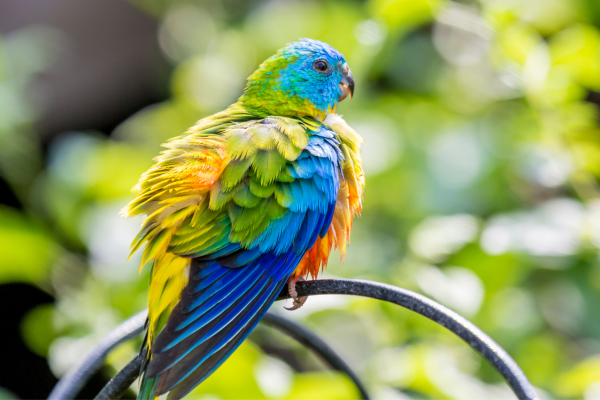
This article is a roundup of information relating to keeping pet birds, from what bird cage is right for you, to taking control of disease outbreaks in aviaries and what toys are safe for your pet birds.
Which Cage Is Right For You?
Cane Bird Cage
Cane is attractive but this cage is too small for its inhabitant to move around in freely.

Square Bird Cage
Birds can become ‘bound’ to their cage if they never get out. Some will not come out even when given the opportunity. In these cases it is best to slowly introduce time out .

Dome
The best cage is the largest cage you can afford. A good pet or produce store can give you expert advice on the most suitable cage for your pet bird. The very best cage is one with the door open and a playgym nearby. Always supervise your bird when he is out of the cage.

Cheap Bird Cage
This Lorikeet lives a life of misery in this tiny cage. He can’t even flap his wings or walk around. He is all alone as his owners work long hours. He has no room to splash in his tiny water container. This cage is illegal.

Show Cage
This Caique parrot only spends a short time in his show cage. Most of his life is spent in a large aviary with time out of his cage each day to spend with his owner. He should not be left in the show cage for long periods of time.

From the inside looking out...
A note by Jim McKendry -
Parrot Behaviour & Enrichment Consultations - www.pbec.com.au
When we make the decision to keep parrots in companion animal environments we make the commitment to provide for them all of the essential elements necessary for an optimum and enriched life. This commitment starts with the creation of "enclosure", a haven for parrot that provides opportunities to feed, bathe, forage and interact safely and independently with its surrounds. The minimum elements of such an enclosure should incorporate a range of species appropriate perching options, access to variable food bowl positioning dynamic and changing foraging experiences, plentiful space for horizontal and vertical movement and of course shelter and protection from potentially harmful elements of environment. You can make a wonderful positive difference to the life of your companion parrot in so many simple ways. The next time you walk past the enclosure of your parrot, think about the perspective your parrot has on life... from the inside looking out.


The free Cockatiels above live happy lives in the company of their owner and each other. Birds are flock creatures. They need the company of their flock be it human or bird! Spend time with your bird. Make him part of your family. Don’t lock her in a cage to look at like an ornament or piece of furniture.

The Lorikeet and the Sun Conure chat to the caged Budgerigar. Free birds will often approach caged birds and try to release them as these two are doing.

These two are best friends and spend their days outside their cage, only going in to eat and sleep. You must be careful of dangers for your birds when they are outside their cages such as hot stoves and cooking pots, detergents etc., buckets of water or full sinks, open toilet lids, open windows, or doors, cats and dogs and much more. Constant supervision is essential.

A large cage with big door and play gym on top. Always ensure supervision for out of cage birds. This cage has wheels to go outside for some sun. When outside with your bird be careful of wild predator birds and swimming pools that your bird might fall in and drown.


The above is an example of a cage and playgym combination. Your bird can move between both via a ladder or rope if his wings are trimmed. The playgym is on a stand and the cage is on wheels for ease of movement between rooms and outside.

One of 6 wild Cockatoos visiting Cockatiels kept in an aviary. They seem to be trying to release the caged birds.
Investigation of Disease Outbreaks in Aviaries
As published in The Pet Directory NSW & ACT Edition
by Dr. Ed Layt B.V.S.c M.A.C.V.Sc (Avian Health)
Wishart Road Veterinary Surgery

In spite careful attention to management and nutition, even the best-kept aviaries may at some time experience the trauma of unexpected deaths or widespread illness in their birds. This article is to inform aviculturalists of the approach needed in deterring the reasons behind such unwanted occurrences, so that a plan of treatment or husbandry change may be made the role of the veterinarian in this case is to make a diagnosis an commence appropriate therapy as soon as possible. However, to achieve this, we rely a great deal on information supplies by the aviary owner.

In any investigation, the strategy employed usually follows the following pattern:
(a) The problem is first reported and a history of the aviary is obtained.
(b) Examination of the aviary and/or live bird may be carried out.
(c) Post mortem examination of birds found dead, or sick birds wich are euthanased.
(d) Specimens of blood or tissues may be taken and sent to a pathology laboratory.
(e) A laboratory report in addidtion to previous findings may lead to a veterinarian making a diagnosis and recommending changes or treatment to the owner.
Therefore in his own interest, the aviculturalist should:
(1) report the problem as soon as possible.
(2) Provide an accurate history, and,
(3) Present specimens and birds which are useful to the imvestigation.
For example, a bird which has been dead for several days is not useful due to the decomposition and internal changes; an aviary which has been hosed out just before the veterinarian arrives does nothing to indicat the nature of the birds droppings or presence of external debris, poisons etc.

Useful history details include:
• The number of birds, age groups, males and females.
• The proportion of the flock affected. Is the complaint confined to any particular group, variety, age or sex. (e.g. inherited deformities in newly hatched birds, or respiratory diseases more generally). Geographical relationships between affected and non affected birds (other animals).
• Recent arrivals and quarantine measures
• Environment – cage material, flooring (litter, wire, concrete, grass or dirt)
• Climate control – temperature, humidity, ventilation.
• Provision and location of the drinking water and feed, especially in relation to contamination by the bird droppings and by rodents.
• Light intensity and duration of exposure.
• Details of previous treatments or medication.
• Breeding details, if a genetic problem is suspected.

A thorough “work-up” is particularly important if the problem may be transmissible to humans. Such diseases in aviaries include Salmonellosis, Chlamydiosis (psittacosis), and allergenic mites.


Aviary Disease Prevention Program

Main Aims:
Quarantine to prevent disease;
Test and treat sick birds;
Improve hygene; and
Minimise drug and veterinary costs – quarantine, hygene and good nutrition should enable you to decrease your financial outlay on these costs by up to 80%.

Diseased Targeted:
Canker – very resistant to majority of drugs now.
Coccidiosis.
Psittacosis – less common in budgerigars than any other species.
Worms – especially roundworm and threadworm/hairworm.
Avian Gastric Fungus/Megabacteria – can lie dormant in carrier birds.
Scaly face mite (Cemidocoptes sp.)

Disinfection:
A is my preference for disinfection of aviaries, However. Halasept or household bleach (10%) are economical and effective. The main thing is to ensure thorough scrubbing of organic material such as droppings, seeds, nesting material and dried foods BEFORE using a disinfectant.
Quarantine – To be effective, a quarantine period must be for at least 42 days. This allows time for most o the above deseases to be detected either by visible signs or by testing. Note that no test is 100% accurate and that “false negative” results can occur. In these cases, moving birds from a quarantine into the main aviary is conducting quarantine, and to achieve if you are buying new quarantine, perform faecal and crop tests in the first and last week.

Finally, before you ignore all the aove because you only buy from friends or repuable dealers, make a civilisation of your collections value in terms of money and genetic development, then ask them if you can afford NOT to have a prevention program in place.
Safe Toys For Your Birds
As published in NSW & ACT Edition of The Pet Directory by Michael Cannon BVSc, MACVSc, Grad Dip Ed - Cannon & Ball Veterinary Clinic
Providing toys for pet birds is an extremely important part of keeping them healthy.
It encourages them to exercise and keeps their minds active. All birds need some mental stimulation to fill in the boring parts of the day, otherwise they will develop some of the more common behavioural problems such as screaming or feather plucking. In the wild parrots spend approximately 60-70% of their time foraging and searching for food. This is not usually as available when they are a pet. So your challenge, as a responsible owner, is to beg, borrow, steal, invent or make toys that encourage your bird to forage and make their day more interesting.
Excercise your bird with good toys!
Leather, cotton ropes, wicker basket material and non-toxic wood (pine or most Australian native trees) are the most commonly recommended toys material for your birds...
Start off with simple toys that encourage the bird to forage.
Make treats out of food (such as raisins, nuts or other food that will not spoil easily) placed in paper and twisted at both ends. The birds will investigate and learn how to open its treat. Then you can make reaching the treat more complex as the birds become better at opening the package and retrieving the treat.
You are only limited by your imagination...
Obviously you want to use materials that are non-toxic and will not harm the bird. Leather, cotton ropes, wicker basket material and non-toxic wood (pine or most Australian native trees) are the most commonly recommended. Any metal components should be stainless steel – avoid copper, lead, aluminium or any galvanized metals. most Australian native trees) are the most commonly recommended. Any metal components should be stainless steel – avoid copper, lead, aluminium or any galvanized metals.
Talk to other bird owners and see how they entertain their birds.




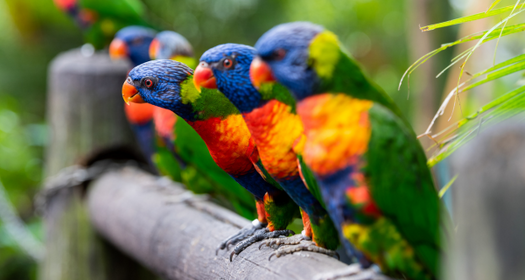
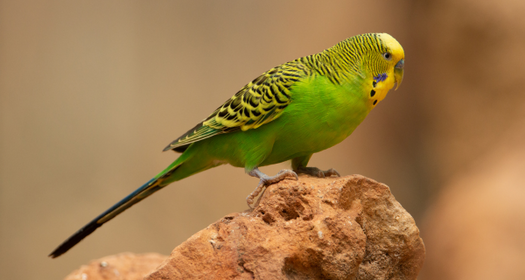
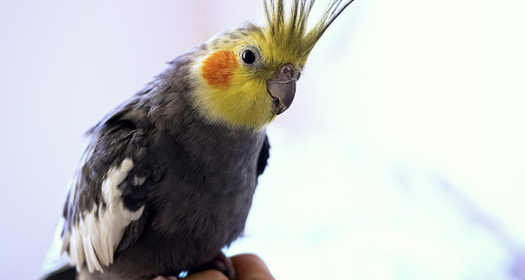
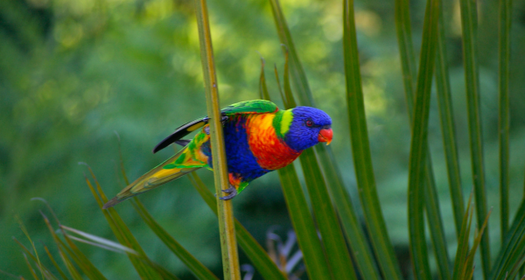
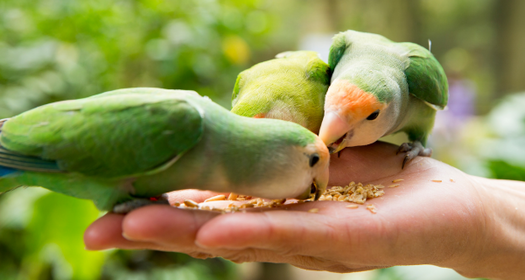


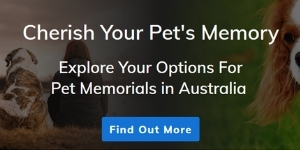
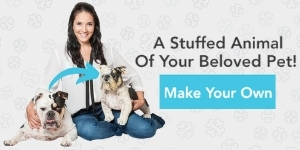
Leave Comment Below